Magic moments marking 170 years of British photography
- Published
Covering the dawn of photography in the 19th Century and moving into the 20th Century, a new exhibition called Britain in Focus charts how photographers have documented and interpreted the UK.
The images span the genres of documentary, landscape and art and were taken by a mixture of professional and amateur photographers. From black and white to colour, and back again, here is a select history of British photography.

The Ladder, April 1844
Polymath William Henry Fox Talbot began the history of British photography with the invention of his "calotype" process, patented in February 1841.
By exposing chemically treated paper to light, and then "fixing" it with a chemical such as hyposulphite of soda, he managed to start publishing his first book of photography, The Pencil of Nature, only three years later. This image taken at Lacock Abbey, Talbot's home, is of a group of men standing around a ladder and was part of this book.
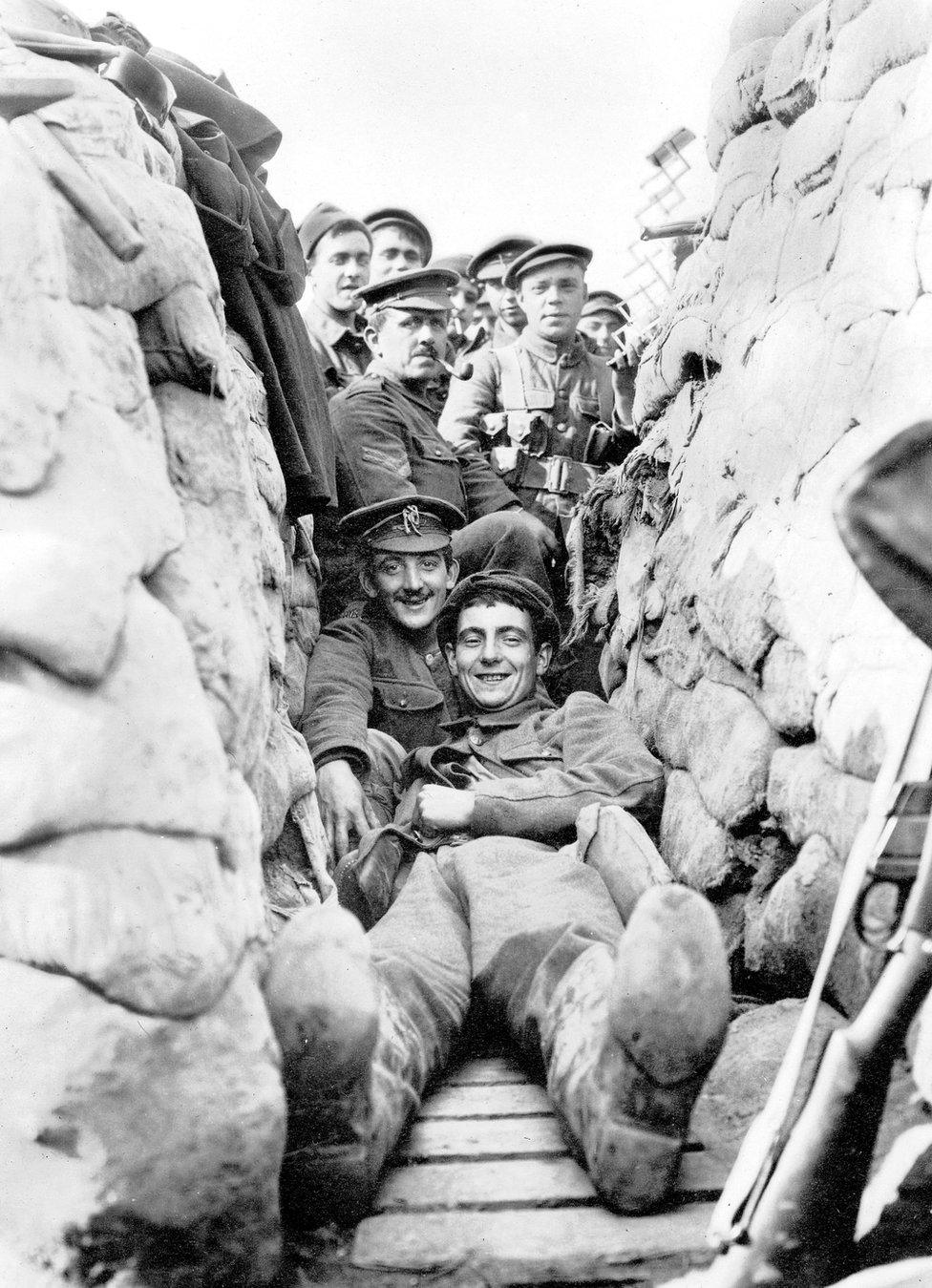
Men of 1/5th York and Lancaster Regiment in International Trench near the Yser Canal north of Ypres, 1915
By the start of World War One, progressions in technology meant that soldiers could capture images of their time in the trenches. Founded in 1888 by George Eastman, Kodak had already popularised amateur photography and when the The Vest Pocket Kodak camera appeared in 1912, it was branded as "The Soldier's Kodak".
More than 28,000 of these cameras sold in 1915, meaning troops could document their life and travels for family back at home. This photo, from the same year, was taken by an anonymous soldier of the men of 1/5th York and Lancaster Regiment near the Yser Canal north of Ypres. Its depiction of smiling troops shows none of the tragedy that was to come.
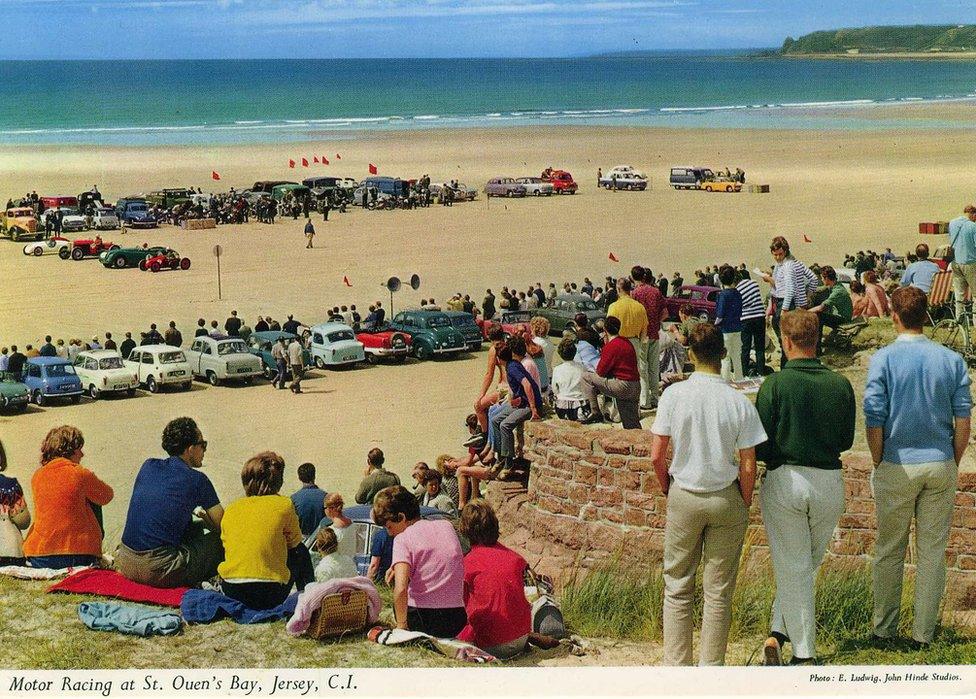
Motor Racing at St. Ouen's Bay, Jersey, Channel Islands by Elmar Ludwig, 1960-1975
Popularised in a time before newspapers printed any images, postcards were a visual way of communicating for Victorians. Coloured ones emerged in the 1960s in order to capture the optimism of this decade, as the UK finally emerged from post-war austerity.
John Hinde postcards accentuated - and even changed - the colours of the original images in order to get the most vibrant images. Beach scenes were populated by bright, smiling families and indicated a new future for the UK.
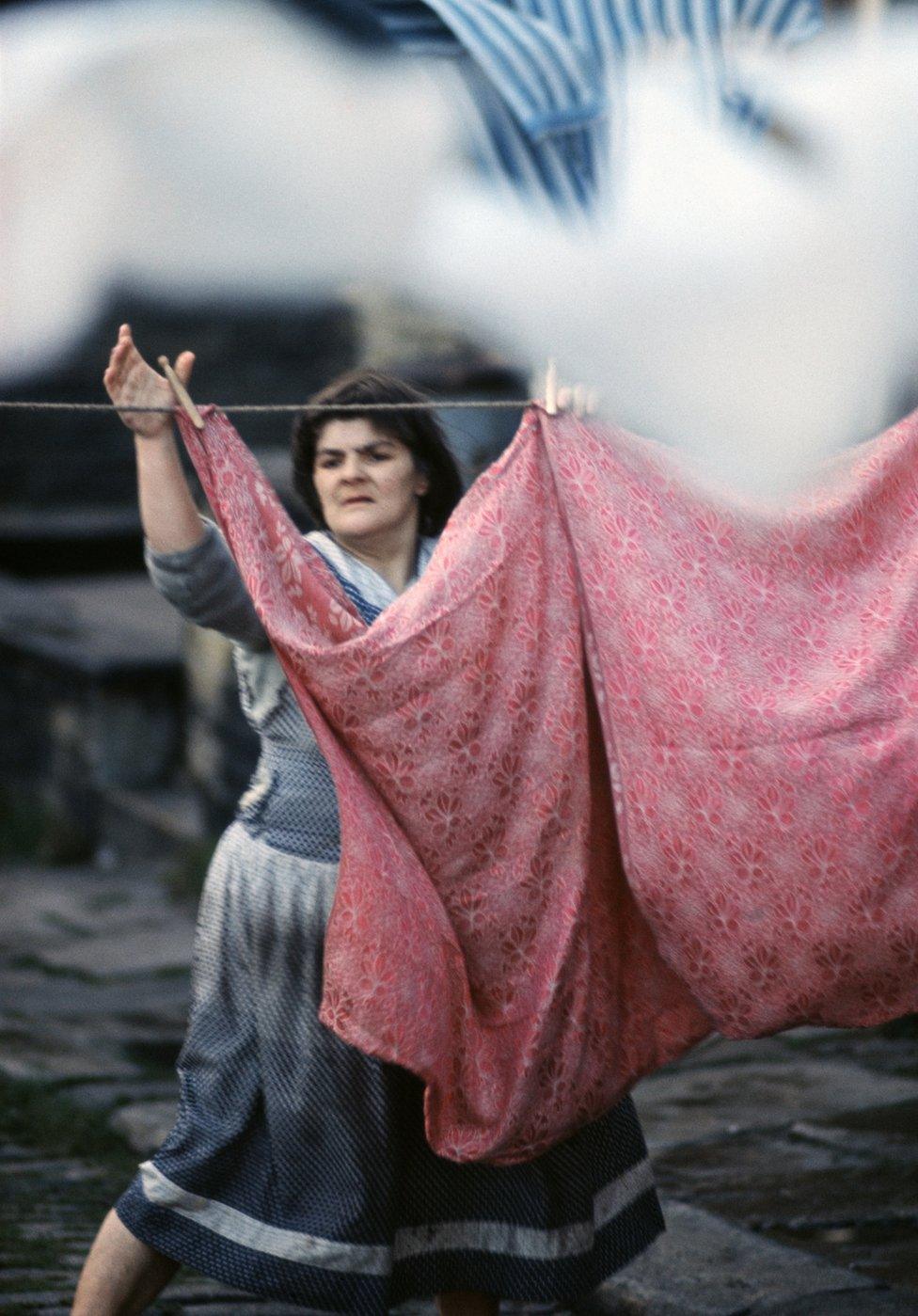
Washing line, Halifax, 1965
The Sunday Times became the first paper in Britain with a colour supplement in 1962. This allowed colour photography to reach a wider audience, something John Bulmer used to his advantage. He shot this image of a woman in Yorkshire hanging out her washing for the paper, making full use of colour film.
Part of the same assignment from 1965, this next photo is of pit ponies at Waldridge Colliery, County Durham. Deliberately taken in winter, Bulmer has said he attempted to convey the atmosphere of the north of England by showing it in rain and fog, rather than the grainy black and white of photographers such as Don McCullin and Neil Libbert.
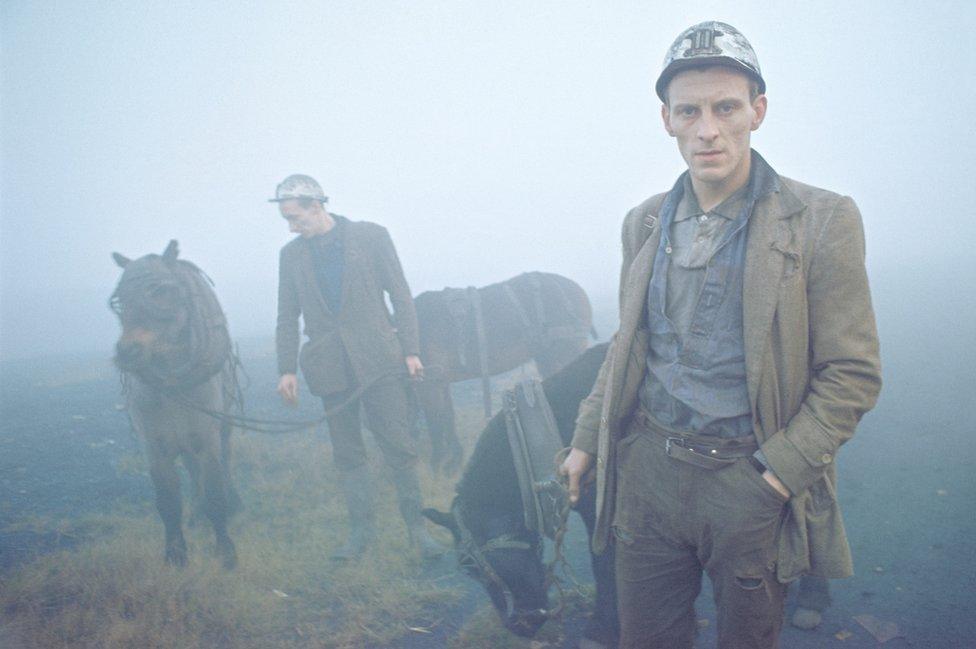
Durham miners, pictured with their ponies, 1965
Almost 10 years later, Peter Mitchell recorded some of the changes taking place in Leeds, as working class communities changed and factories were torn down.
Here, Mr and Mrs Hudson stand outside their newsagents in the Seacroft area. These images were taken with the aid of a stepladder, using a medium format Hasselblad camera.
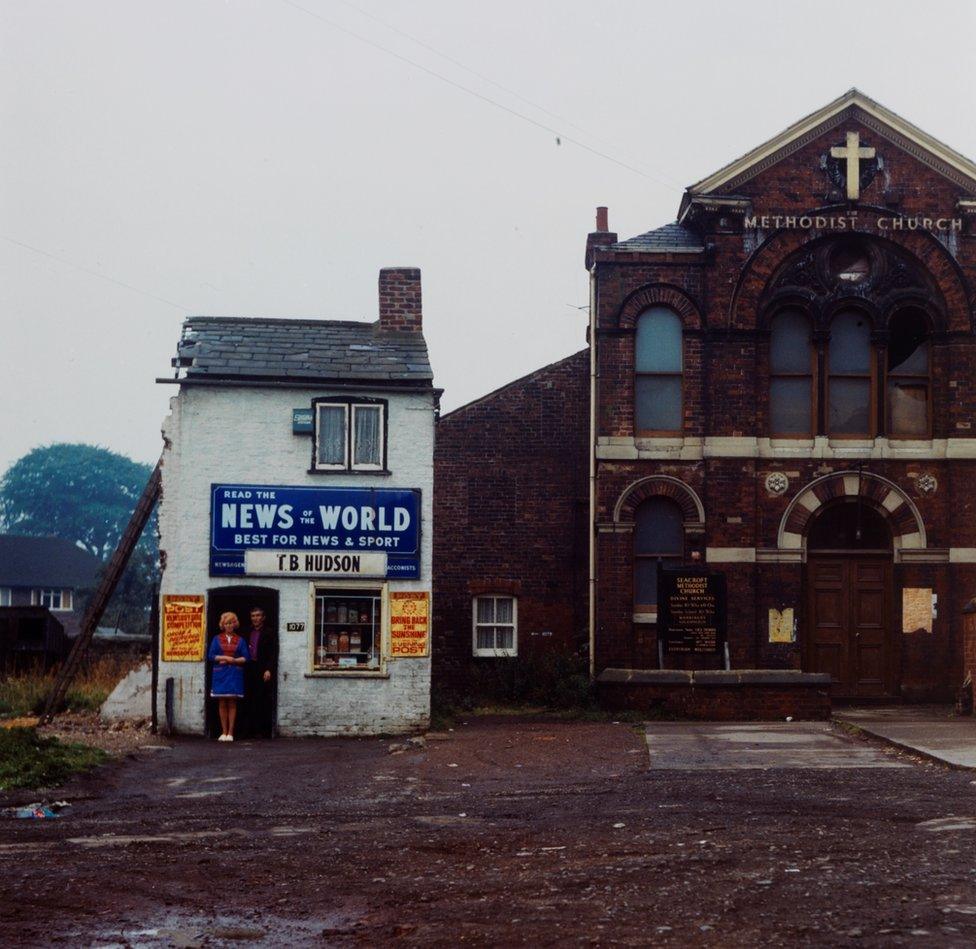
Mr and Mrs Hudson, newsagents, Seacroft, Leeds, 1974
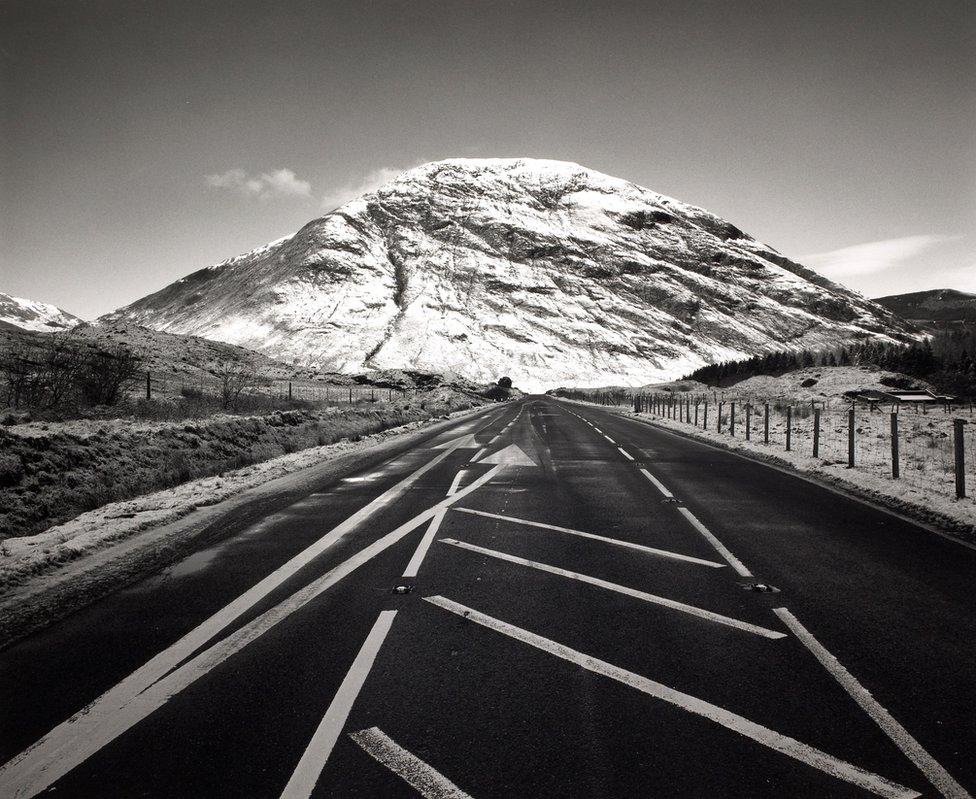
Meall Mor; Glencoe, 1989
A 1985 book called Land meant that Fay Godwin's landscape photography of picturesque views across Britain reached a wider audience.
Capturing the changing landscape of Britain, however, her photographs were not only beautiful but also showed the effect that pollution and urbanisation had on the environment. The below photograph is particularly concerned with the impact that the Ministry of Defence was having on the area of Lydd, Kent.
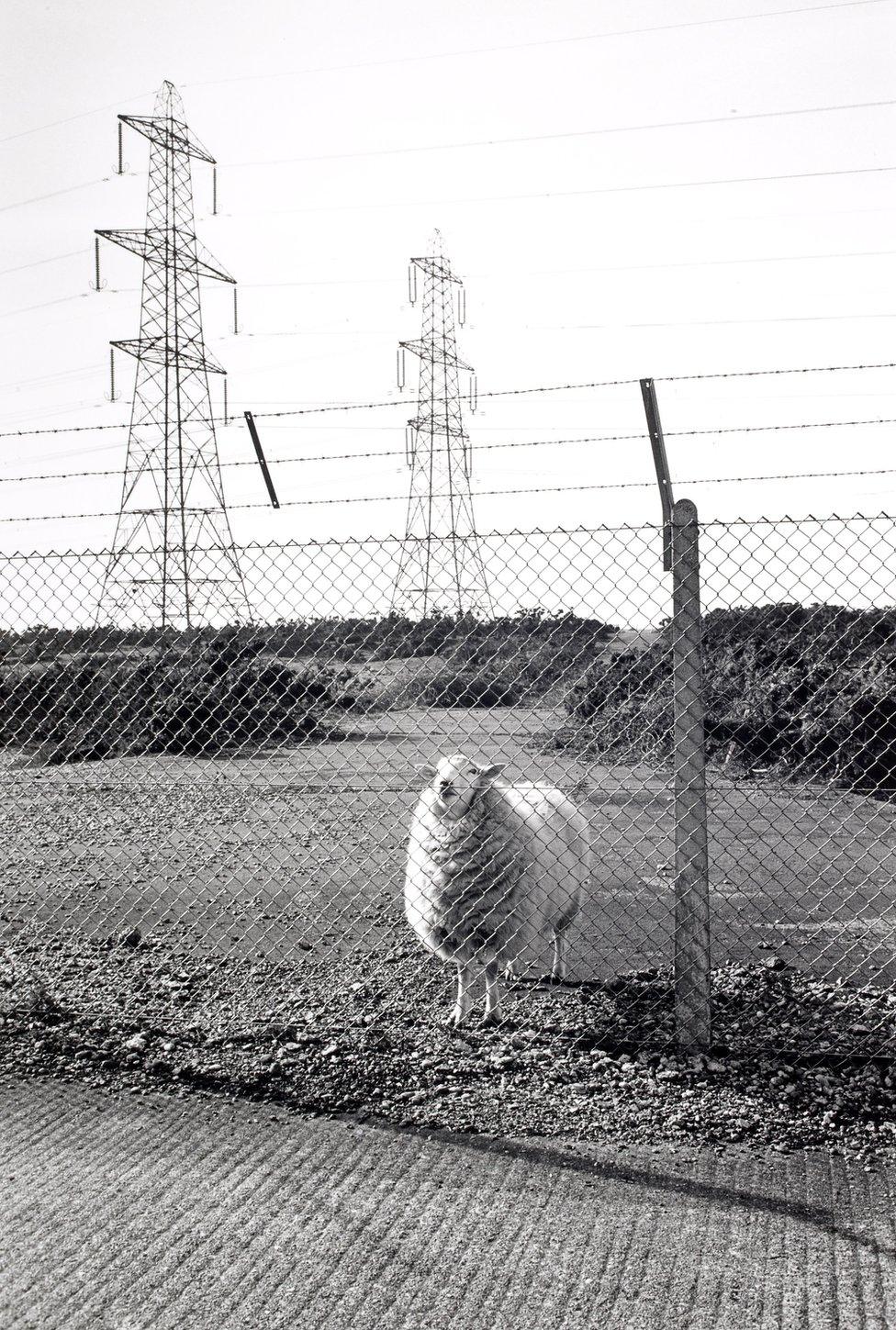
Blocked public footpath in MOD Land; Lydd, 1988
Britain in Focus: A Photographic History is on at National Science and Media Museum, external, Bradford from 17 March - 25 June 2017. It is partnered with a three-part documentary by BBC Four under the same name, presented by Eamonn McCabe.